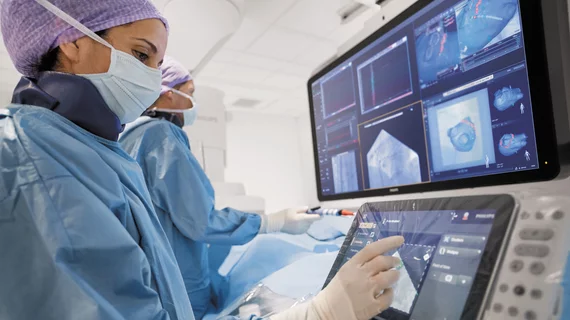The number of interventional radiology trainees has been steadily increasing ever since the field was converted to a primary specialty. Some experts question, however, if these students are adding enough value to the institutions they train in.
That was the chief inquiry posed in a letter to the editor published recently in the Journal of Vascular and Interventional Radiology. The answer is complex, according to John A. Kaufman, MD, MS, of Oregon Health Sciences University’s IR department, and requires understanding the aim of academic medical centers.
In addition to providing quality care, these institutions are also tasked with educating providers. To achieve this, many have higher baseline staffing levels and therefore increased costs. A wider variety of cases and larger volumes of safety-net care also contributes to these finances, Kaufman noted.
Academic centers also tend to provide higher quality care, with better mortality outcomes for some conditions compared to nonteaching groups. While the explanation for this is likely multifaceted, the author argued increased availability of IR specialists is at least one contributing factor.
“In an environment in which value is determined by dividing quality by cost, the presence of residents may actually increase the value of academic centers,” Kaufman wrote, adding that replacing trainees with advanced clinicians would likely double salary spending.
A study published just last month found that IR represented $68.4 billion of adult inpatient healthcare spending in 2016, and is only expected to grow as the population ages.
Another investigation published Oct. 13 detailed the many ways radiology residents have improved patient care during the pandemic by taking part in daily rounds.
Because IR residency is still young, it will take time to know the true effect it has on the cost and quality of outcomes, Kaufman noted.
But integrated IR residents are in the same center for at least five years, which likely leads to more consistent and higher levels of care. And the growing number of trainees also bolsters capacity for interventional radiology consultations, inpatient rounds, clinic visits, and procedures, he added.
Finally, given that most residents who pursue IR early on will enter independent residences with well-developed skills, Kaufman believes the ever-increasing number of specialists is likely to improve care and lower costs in the long run.

